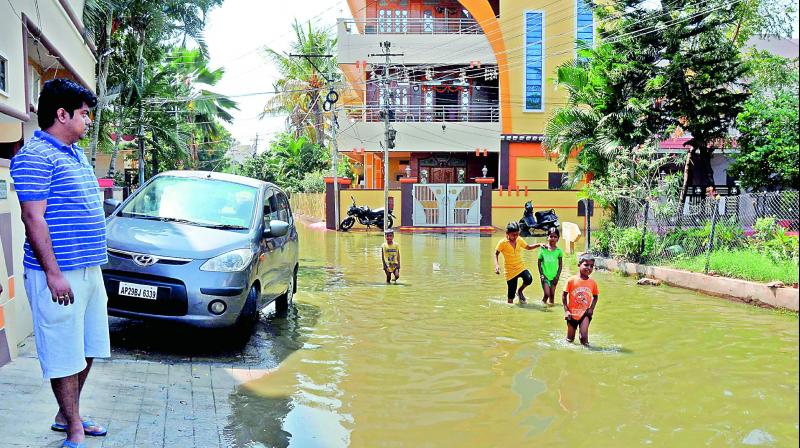Hyderabad: Separate sewage, stormwater networks to save roads

Hyderabad: The GHMC and the Sewerage Board have been told to separate the sewage and stormwater networks as a permanent solution to prevent damage to roads and overflow of dirty water.
Experts made the recommendation after finding in a survey that excess sewage was entering the stormwater drains. This was gushing out of stormwater drains and damaging the roads. If the fix suggested by experts is to be implemented, it would cost Rs 5,800 crore out of the Rs 10,000 crore earmarked for the upgrading of the master plan in the city.
The solution was evolved during a brainstorming session conducted by retired chief engineers, Water Board and GHMC engineers at the Institute of Engineers Khairatabad.
The meeting reviewed the report submitted by Prof K. Lakshman Rao, director and professor for Centre of Excellence on Disaster Management, JNTU College of Engineering, Hyderabad, and felt that rather than constructing thousands of water tanks, rainwater harvesting pits and reverse-camber the existing roads, it would be better to strengthen the existing sewerage and stormwater network by shifting them to either side of the road.
Apart from this, the experts also felt that treating sewage at the source would further reduce the problem, rather than widening nalas which would affect about 28,000 families. A senior GHMC official who was present at the session said that conventional solutions such as box culverts, widening nalas, diversion of stormwater, and road repairs would act only as a temporary panacea, if the sewage question was not addressed in its totality.
“What is the point of widening the nalas if they cannot carry more than half of the city’s untreated sewage even during dry season,” he said.
The city can treat only 750 million litres per day (MLD) of the total outflow of 2,000 MLD. More than 50 per cent of the dirty water is let into the city’s water bodies. A GHMC official said that as the sewerage network and stormwater drains were interconnected, much of the sewage entered the nalas to merge with the Musi river. During heavy rains, flood water gushes into the sewerage network, resulting in overflowing drains across the city, besides causing inundation. Separating the two networks was the answer, he said.
“Many experts admitted during the round table meeting that the nalas would suffice with the removal of a few bottlenecks if the sewerage network was strengthened,” he added.

